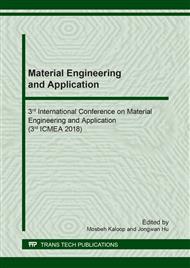p.1
p.6
p.14
p.20
p.26
p.31
p.37
p.45
Plastic Bag Waste on Hotmixture Asphalt as Modifier
Abstract:
Indonesia is the second largest country to contribute plastic marine debris in the world. Onthe other hand, Indonesia is facing pavement problem due to various reasons, so it needs to improvethe pavement quality and performance. The addition of plastic waste to the hot mix asphalt (HMA)actually have beneficial effect to improve the pavement quality. Utilization of plastic waste in roadconstruction is conducted by incorporating the plastic waste into the asphalt mixture as an additivewith dry or wet mix process. The objective of this research is to investigate the laboratoryperformance of asphalt mixture using plastic waste addition and its effect on the moisture sensitivity,resistance to deformation and the fatigue life of the asphalt mixture. The addition of plastic waste inHMA will increase the Marshall stability and the resilient modulus of the mixture, improve strippingresistance, moisture sensitivity and also the rutting resistance. Up to a certain plastic content, theaddition of plastic waste will improve the fatigue life and the ravelling resistance of the HMA, on thecontrary excesive addition of the plstic waste will decrease the fatigue life and ravelling resistancecompare to the conventional HMA. The field application is very simillar to conventional HMA,except it requires additional time during dry mix process in the production plant.
Info:
Periodical:
Pages:
20-25
Citation:
Online since:
November 2018
Authors:
Price:
Сopyright:
© 2018 Trans Tech Publications Ltd. All Rights Reserved
Share:
Citation:


